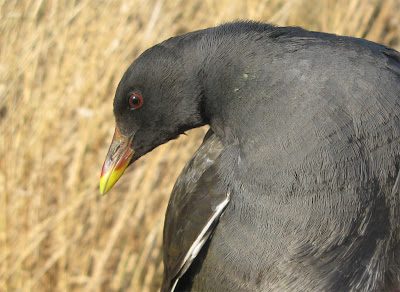Last week I ringed twice at Tzor'a. This is a very good ringing season in our region. Every session we ring 100-200 birds of many species, 24-29 bird species every session! My highlight last week was a Yellow-browed Warbler on 08/11 - tick for me. Other exciting species included Water Rail, Jack Snipe, 2 Pied Kingfishers, Moustached Warbler, Caucasian Stonechat, Common Rosefinch and first Bramblings of the season.
 |
| Yellow-browed Warbler |
 |
| Brambling |
 |
| Jack Snipe |
On 08/11 I ringed for the first time this season at the finch roost in Tzor'a Valley citrus plantations. This is a big citrus plantation and it hosts about 50,000 finches for roosting every night in winter, 90% of them are Chaffinch, but also Linnet, Brambling, Greenfinch, Song Thrushes and others coming to the huge roost. In the last four years I ringed in this roost about 8,500 birds (7,000 were Chaffinch). We (Ron, Yotam, Shabi and Marco) ringed about 100 birds; most were Chaffinch with a few recaptures from previous years, Robins, Song Thrushes, Greenfinch, Brambling and for dessert - one Common Rosefinch.
 |
| Ron, Yotam and Song Thrushes |
 |
| Common Rosefinch |
 |
| Water Rail |
First Hawfinch this season was ringed at the Jerusalem Bird Observatory.
 |
| Hawfinch |



















.JPG)
.JPG)
.JPG)


.JPG)
.JPG)